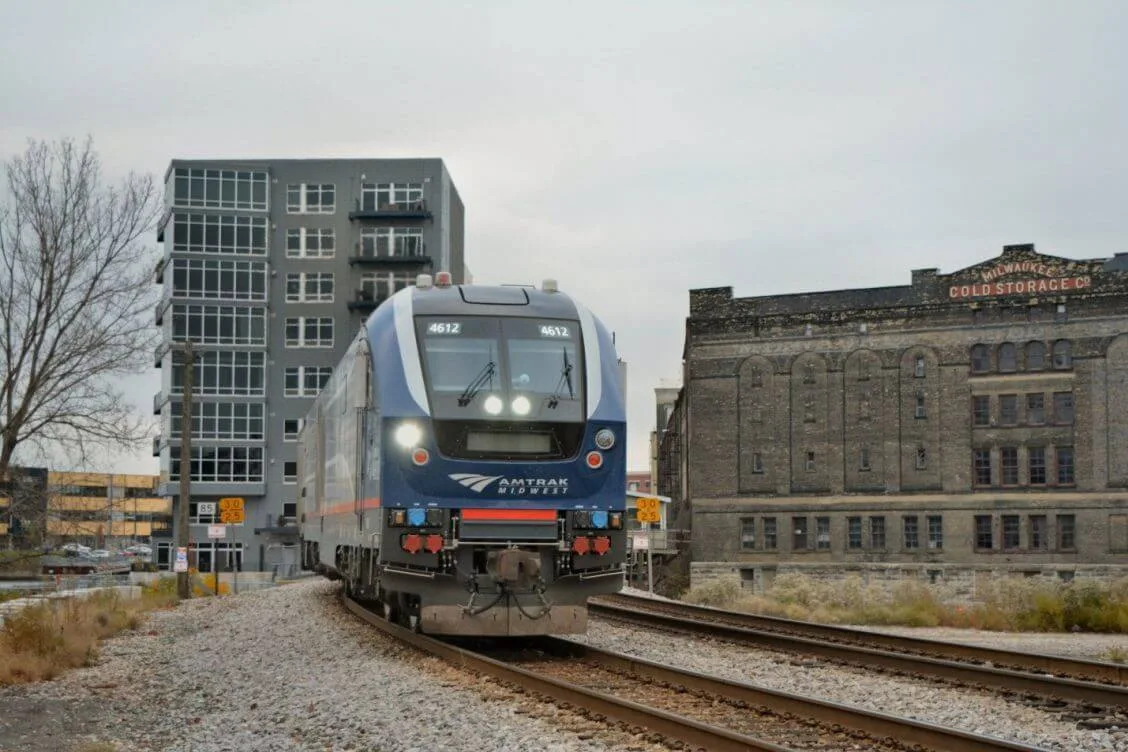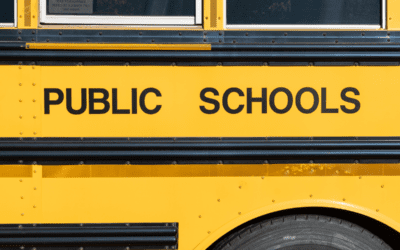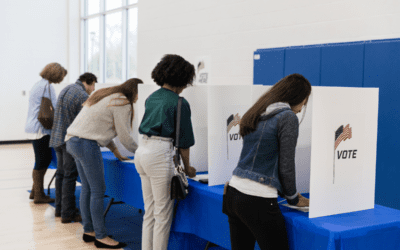
Roads and bridges matter. So do trains, buses, and bike paths. But for being a world leader in many ways, the US still trails many countries in terms of public infrastructure.
In Germany, for example, 23% of commuters bike to work and another 26% use public transportation. In America, those numbers are 10% and 11%, respectively.
Fortunately, that’s changing.
More than 160 specific infrastructure projects have already been earmarked to receive funds in the Badger State, thanks to Biden’s once-in-a-generation Bipartisan Infrastructure Law. One of the biggest is Wisconsin’s proposed Amtrak expansion.
What We Know
The Wisconsin Department of Transportation (WisDOT) received $66 million in federal funding to improve and expand Amtrak service. It plans to use that to build a station in Madison, which would connect the state capital with three major cities (Milwaukee, Chicago, and Minneapolis) and more than a dozen smaller Wisconsin towns (Eau Claire, La Crosse, Tomah, Camp Douglas, the Dells, Portage, Columbus, Green Bay, Appleton, Oshkosh, Fond du Lac, Watertown, Oconomowoc, and Sturtevant).
New train routes are good for the state economy & your bank account.
Amtrak tickets run as low as $6, with additional discounts for seniors, students, AAA members, and more. “A successful passenger rail service will also provide additional economic growth opportunities to the communities along the routes,” the WisDOT Office of Public Affairs told us in an exclusive interview.
Better rail service also means cleaner air, less traffic, and happier people. Amtrak emits up to 83% less greenhouse gas (the kind responsible for climate change) than cars and 73% less than planes. The average American spends more than 80 hours a year in commute-tied traffic—equivalent to two weeks of vacation down the drain!

What We Don’t Know (Yet)
How long will it take to build and open a new train line?
The answer, according to WisDOT, depends on the specific length and landscape of each corridor (the route between two stops.) The department is currently conducting a planning study to create a service development plan. After the plan is made (and approved by city, state, and federal officials), they’ll have a better construction timeline.
How much will this cost Wisconsin in the long-run?
While the Biden Administration will foot the bill for an unprecedented $66 million in construction costs, there are still maintenance and operational fees. However, one benefit of rail is that those fees are mostly covered by passenger ticket sales. The Federal Railroad Administration also has a program to help offset costs for the first six years of operation (90% the first year, 80% the second year, and so on.)

What’s Next
We need Wisconsin’s Republican legislators to get on board, both literally and figuratively.
Assembly Speaker Robin Vos and Senate Majority Leader Devin LeMahieu have already said they’re opposed to any state spending for the Amtrak project. Since Republicans control the state Legislature, their opposition could be a substantial roadblock. While the first round of federal funding for the project doesn’t require a match from the state, future rounds require a 10% state and 20% local match.
Amtrak will continue expanding, whether in Wisconsin or not.
The rail service company’s 2035 vision includes plans to add 30+ new routes, 20 million new riders, and 160 more communities. Amtrak, the most financially-efficient passenger rail company in the US, has a 90% on-time average. They’re currently working with Congress on a program to improve that by prioritizing passenger over freight trains on shared routes.
Support Our Cause
Thank you for taking the time to read our work. Before you go, we hope you'll consider supporting our values-driven journalism, which has always strived to make clear what's really at stake for Wisconsinites and our future.
Since day one, our goal here at UpNorthNews has always been to empower people across the state with fact-based news and information. We believe that when people are armed with knowledge about what's happening in their local, state, and federal governments—including who is working on their behalf and who is actively trying to block efforts aimed at improving the daily lives of Wisconsin families—they will be inspired to become civically engaged.


Opinion: Many to thank in fair maps victory for Wisconsinites
On February 19, 2024, Governor Tony Evers signed into law new and fair state legislative maps, bringing hope for an end to over a decade of...

Opinion: Empowering educators: A call for negotiation rights in Wisconsin
This week marks “Public Schools Week,” highlighting the dedication of teachers, paras, custodians, secretaries and others who collaborate with...

Op-ed: Trump’s journey from hosting The Apprentice to being the biggest loser
Leading up to the 2016 election, Donald Trump crafted an image of himself as a successful businessman and a winner. But in reality, Trump has a long...

Not just abortion: IVF ruling next phase in the right’s war on reproductive freedom
Nearly two years after the US Supreme Court overturned Roe v. Wade, another court is using that ruling to go after one of the anti-abortion right’s...





